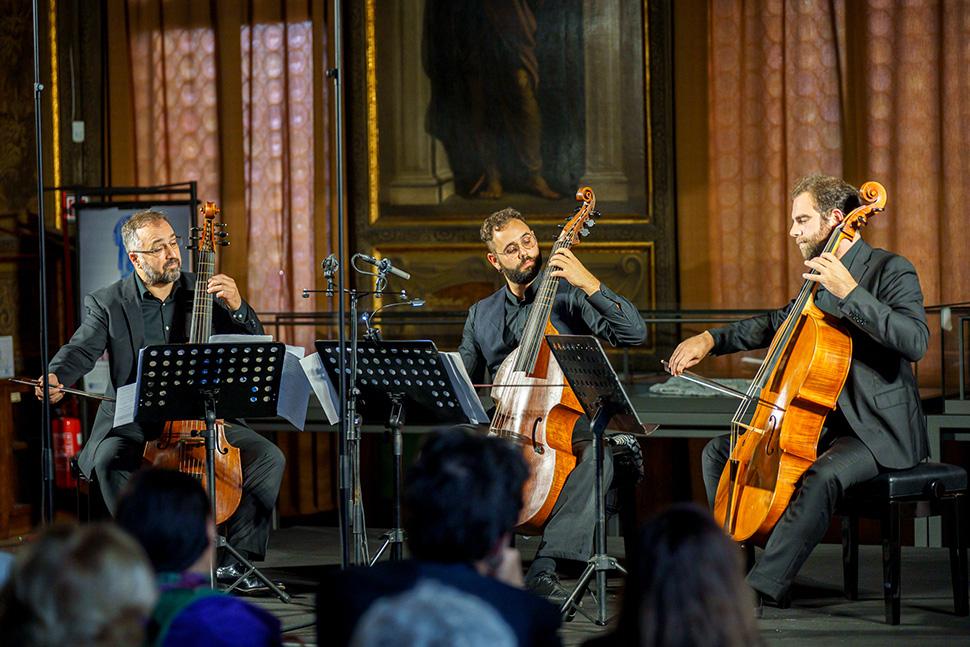| Benedetto Marcello: | VI Sonata a Tré Op. II (1734, 40’) – n.2, n.3, n.4, n.5 for two viola da gamba and cello |
|---|---|
| Giovanni Sollima: | Lamentatio (2024, 7’) for viola da gamba (commissioned by La Biennale di Venezia) |
| Instrumentalists: | viola da gamba Cristiano Contadin, viola da gamba Giulio Tanasini (Biennale College Musica - Performer), cello Massimo Raccanelli |
| Production: | La Biennale di Venezia – CIMM, Centro di Informatica Musicale e Multimediale |
Benedetto Marcello / Giovanni Sollima

BENEDETTO MARCELLO - VI SONATA A TRÉ OP. II
The Sonatas either for two cellos or two viols and basso continuo, along with those published few years before for cello and continuo, are considered an early contribution to the cello sonata genre, which developed in the early eighteenth century in Italy – then the centre of soloistic cello playing. Their publication came at a time when the composer, very prominent in Italian musical life at the beginning of the eighteenth century, had already strongly curtailed his activities and was primarily composing religious works. Despite his subsequent disinterest in instrumental music, at the beginning of his activity Marcello proved to be perfectly consistent with the great innovative ferment of Venetian music outside the scope of opera and sacred music. In this sense, the aristocrat Marcello, in his polemic against the opera theatre, perfectly embraced the experimental and abstract language of instrumental music, participating in the great planning of musical modernity underway in Venice in the first half of the eighteenth century.
GIOVANNI SOLLIMA - LAMENTATIO
Version for viola da gamba solo.